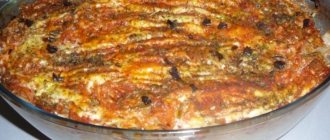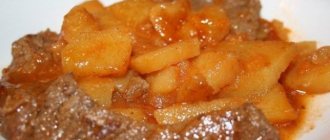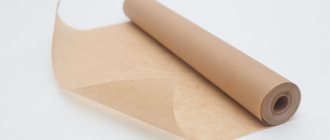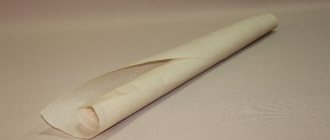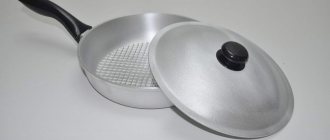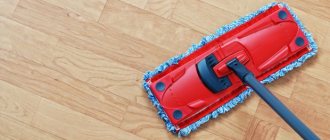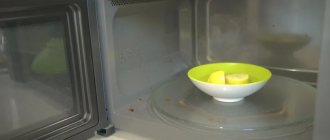Housewives are wondering how to clean a frying pan from carbon deposits and grease in 5 minutes. The task is not easy, you will have to try hard to return the dishes to their former shine. To do this, you can use not only purchased products, but also traditional methods. In most cases, they are the ones that are effective.
Over time, deposits in the pan become more and more. First of all, it spoils the appearance of the dishes. In addition, when cooking, substances are released into the air that the whole family has to breathe. Which is harmful to health.
How to remove soot from hazelnuts
Every housewife probably has “grandmother’s” cast iron cookware stored somewhere in the kitchen!
The cast iron that you can buy now cannot be compared with the quality that was before. But how to cook delicious dishes when the dishes are covered with an unwashable burnt layer of fat? And is it possible to give your favorite saucepan a second life? There is an exit! This method will make your old favorite dishes look like new! For this tip, I had to find a typical example of an old cast iron frying pan with a fairly decent layer of burnt fat on its walls.
So, to begin with, we will need the simplest at first glance available means, and these are: 1) universal PVA glue (regular medium jar, I have 125 g) 1 pc 2) laundry soap 72% 1 pc
So, first, grate the laundry soap on a coarse grater.
I pour water into a large container (in my case, a large deep basin) and bring it almost to a boil. At this point, I reduce the heat and pour grated soap and PVA glue into the basin. I mix everything thoroughly so that the soap dissolves. I dip the frying pan, “killed” over the years, into the resulting solution.
I. don’t be alarmed. I cook it for 2 hours over medium heat, adding water when part of the solution evaporates.
. During the entire time of this work I had the hood turned on. This in no way means that there will be a strong smell! There is a child in the apartment, so, as they say, out of harm’s way.
After 2 hours, I drained all the solution and cooled the pan itself a little under running water.
I would like to draw your attention to the fact that this solution makes the fat itself very soft. In some places it began to crumble on its own. I brought it to perfect shine by regular cleaning with a metal sponge. The process itself took me about 30-40 minutes.
Believe me, this method is the most effective and simple, and most importantly not expensive!
And here is the result - the dishes sparkle and beg to be cooked in them!
Procedure
Soda and mustard powder must be mixed until smooth.
Add powder mixed with soda to the pan and add a drop of office glue.
Then bring it all to a boil.
If the frying pan is small and fits into the pan, then there is no problem.
And if it has a much larger diameter than the pan, then you should use a basin.
The water with the cleaning ingredients has boiled; all that remains is to pour it into a basin that fits the frying pan.
Leave the dishes in it for 1 - 1.5 hours.
After this, any soot will easily come off the frying pan, no matter how strong and long-lasting it may be.
Although the method is not too fast, it will not require any effort from you.
After such a procedure, carbon deposits literally clear themselves from the surface of the dishes.
And after such a “bath”, the frying pan and other utensils will sparkle clean, like new.
Try it too. Very convenient, saves energy and time.
Give
the article a thumbs up and SUBSCRIBE TO MY CHANNEL , we add recipes and useful housekeeping tips every day.
How to easily clean a waffle iron?
If we are talking about an old cast iron waffle iron for baking waffles on a regular stove, which you inherited from your mother, then you can use the same cleaning methods for it as for old frying pans. After all, a waffle iron consists of two frying pans with handles connected to each other. We place the waffle dough on one of them, and press it on top with the other. Then bake the dough on the stove, turning the waffle iron over to one side or the other. Cleaning this waffle iron is as easy as shelling pears. Just stick it in a container of water and wait an hour or two.
You should care for such a waffle iron in the same way as a regular frying pan made of the same material, that is, clean and wash it following the manufacturer’s recommendations after each use of the utensil. If you do this constantly, then carbon deposits on the waffle iron will not accumulate. But if time is lost, and carbon deposits still accumulate, then a problem arises: how to return the product to its original appearance and a clean inner working surface suitable for baking.
With a thick layer of soot and fat, this is not at all easy to do. We'll have to work hard.
Of course, it’s easier to get rid of carbon deposits using industrial chemicals, which you can always buy in a store. But, despite the fact that they are able to quickly dissolve old fat, they should not be used in this case. Harmful inorganic acids and chemicals, which are necessarily included in these products, will not be completely washed off from the inner surface of the waffle iron, no matter how hard you try. Because of this, the remains of harmful “chemicals” enter our body with food and, like a time bomb, gradually poison it.
Traditional methods of cleaning
For kitchen utensils, including waffle irons, use other environmentally friendly methods for removing carbon deposits. I propose to remember the folk methods that our grandmothers used. Suitable for cleaning dishes from carbon deposits:
- Soda (baking soda or ash) - perfectly cleans and softens any hardening on dishes.
- Vinegar and citric acid - whiten stains, eliminate unpleasant odors, and fight grease.
- Dry mustard – perfectly degreases and cleans the surface of dishes.
- You can also use natural-based laundry soap and stationery (silicate) glue. They are also often components of cleaning products made according to folk recipes.
The following method of getting rid of carbon deposits is widely practiced: take a container large enough to place a waffle iron or other kitchen items that require cleaning from carbon deposits (frying pans, frying pans, baking dishes, etc.) Fill with water to cover all items fully. Add a generous handful of soda and a bottle or two of silicate glue to the water.
There are also recipes that use laundry soap. All this should simmer over low heat. The boiling time depends on the age of the deposits and the thickness of the carbon layer. It may take several hours. During this procedure, turn on the hood or open a window, since when the solution boils, vapors with a heavy, unpleasant odor will be released. I'm sure many people don't like this method anymore.
But that is not all. If there is a lot of soot, it will not dissolve completely, but will only soften. Even after boiling for a long time, it will take additional effort to completely remove the black layer of smoke from the dishes. Moreover, you can only use steel wool or a knife to clean the outside and sides of the waffle iron.
And its inner surface cannot be scratched. Here you need to work with a not very hard brush. For example, a soft toothbrush works well to clean a tartan or honeycomb countertop. This work is painstaking and time-consuming.
If you don't have the patience for such a job, part with your old, antediluvian waffle iron. Buy yourself a new, modern electric waffle iron.
Caring for your electric waffle iron
Many models of electric waffle irons have non-stick coating on the working surfaces. With proper care of the device, carbon deposits have no chance. Simply, after using the device, sweep away all the crumbs with a soft brush and wipe the warm surface with a paper towel or napkin that absorbs grease. Soften any stuck dough with vegetable oil.
If the working surfaces are removable, cleaning the device is even easier. Remove them, rinse with water, wipe dry and return to their place.
If you do not follow these rules on time, you risk again making yourself a problem with cleaning out old fat. And an electric appliance, unlike an old ordinary waffle iron, cannot be put into water and boiled (I hope this is clear to everyone).
True, you can partially apply a self-made paste from the above-mentioned folk remedies to hard-to-remove areas. Then carefully clean the problem area with a soft brush or cloth.
How to clean the working surface of the device is always indicated in the instruction manual. It is unwise to ignore this important information. After all, there are both general recommendations and specific ones specifically for your waffle iron.
How to clean a frying pan from carbon deposits: 25 best ways
A frying pan is the most popular kitchen item; every housewife wants to preserve its original appearance for as long as possible.
But since the frying pan is used with various oils and fats, carbon deposits form over time, which is not an easy task to get rid of. Experienced housewives resort to both chemical and folk remedies. In our publication, we will share with you proven ways to clean a frying pan from carbon deposits at home.
Useful tips on how to clean aluminum cookware at home
Aluminum pots and pans, like many years ago, remain an unchanged part of kitchen utensils in every home.
Despite all the positive characteristics, this practical and convenient tableware darkens and loses its luster over time.
Numerous time-tested folk remedies or household chemicals will help restore the original appearance of aluminum cookware.
We will tell you in this article how you can and cannot clean aluminum cookware.
General information
Cast-iron pan
It is on the surface of cast iron frying pans that a thick layer of soot accumulates, which is almost impossible to remove using conventional detergents. In this case, aggressive cleaning agents are used, which can be harmful to health, since most of these products are toxic.
Therefore, they can only be used by observing the following safety rules:
— open the window and turn on the hood;
- wear strong rubber gloves;
- rinse the dishes thoroughly under running water;
- if you cleaned the frying pan from the inside, you can boil a small amount of water in it, and then rinse thoroughly again under running water to completely remove any chemical residue.
One of the most effective means is sewer pipe cleaning liquid. Directions for use: Add 0.5 liters of liquid to five liters of water.
Important: add the reagent to the water, not vice versa, otherwise a violent chemical reaction will occur.
You should work with this solution wearing thick rubber gloves; soak the frying pan in the resulting solution. Soaking time depends on the degree of contamination.
Aluminum frying pan
“Shumanit” is ideal for cleaning aluminum frying pans. Available in the form of a liquid, gel or cream, it can cope even with many years of grease and carbon deposits. The downside of this product is toxicity. Therefore, use only if certain rules are observed, including necessarily ventilating the room, working with rubber gloves and strictly following the operating instructions.
Non-stick frying pan
Modern frying pans have three types of non-stick coating: Teflon, marble and ceramic. Therefore, they do not require a large amount of fat or oil when cooking with them. This makes cleaning them very easy, just use a few drops of detergent.
Features of the material
Artificial rubber is produced from quartz sand using a special technology. Food grade silicone is made from it, which at high temperatures:
- does not emit hazardous substances;
- does not react with other components;
- not deformed.
Kitchen utensils made of elastic material do not crack when heated to 220–230 °C. Baked goods in silicone molds do not burn, the walls do not require greasing before adding dough, and the product does not acquire an unpleasant odor. Kitchen utensils made of the following materials:
- has low weight;
- does not allow electricity to pass through;
- lasts a long time.
When removing pies or biscuits, the mold is easily turned inside out and the baked goods do not crumble. Silicone products can be easily rolled into a tube, folded in half, and take up minimal storage space.
Cupcakes bake faster in polymer pans than in metal or glass pans. Silicone has high thermal conductivity, which results in fluffy loaves; the dough in such a container does not shrink and bakes well even in large loaves.
Miniature and large, oval, round, rectangular shapes are made from elastic material.
Silicone accessories should not be placed on an open fire, but when taken out of the refrigerator, they can be immediately placed in a hot oven. The material not only withstands high temperatures, but does not deteriorate at -60 ° C. To clean polymer products, you should not use abrasives or aggressive chemical substances; it is not recommended to rub them with a brush, so as not to puncture them.
Effective ways to remove carbon deposits and grease
Method No. 1. Laundry soap + PVA glue.
Grate ¼ of the laundry soap and place the resulting soap shavings in the frying pan. Add PVA glue and a small amount of water, place the pan on the stove and simmer for 30 minutes. Remove the frying pan from the stove and leave to cool, then pour out the cooled liquid, rub the frying pan thoroughly with a sponge and wash under running water.
To clean a cast iron frying pan, mix vinegar with water in a ratio of 1:3, pour the resulting solution into the frying pan and boil for 15 minutes. During this time, make sure that the water does not completely boil away, add little by little. After 15 minutes, turn off the stove and leave the pan to cool. Then pour out this solution, wash the dishes using a special product and a little soda, which completely neutralizes the smell of vinegar.
Method No. 3. Laundry soap.
You can deal with carbon deposits on the inside of the frying pan using ordinary laundry soap. The huge advantage of this product is that it is harmless and suitable for all types of pans.
Grate 1/3 of the laundry soap, place in a frying pan and add water. Place on the stove and bring to a boil over low heat, then turn off the heat, cover the pan with a lid and set aside. A hot soapy solution will remove all burnt marks, drain the cooled liquid and wash the pan in the traditional way.
This method is suitable for removing burnt marks from the outside; to do this, pour the solution into a boiling container and place it in the frying pan. All other actions are similar.
Method No. 4. Carbonated drink.
Fill the pan with soda, place on the stove and boil for 30-35 minutes, then rinse with running water. To get rid of carbon deposits from the outside, pour enough soda into a container to immerse the entire frying pan in it, then the whole procedure is done in the same order.
It is best to use this method outside the home, on the street. But if you suddenly decide to dare and carry out the procedure of cleaning carbon deposits with fire at home, make sure to open the window in advance, since such a cleaning process is accompanied by an unpleasant odor and the formation of smoke. Support the frying pan over the burner of the gas stove, turning it so that the flame burns the pan from all sides. Most of the greasy carbon will burn off, and the rest will come off. After completing the procedure, wash the pan as usual.
Important: this method can be used outside the home, on the street, garage or yard.
A special metal nozzle is required to remove the burnt layer. After cleaning, wipe the pan with a dry cloth and wash it in the traditional way. Please note that during work, small particles of burnt particles can get into the eyes and respiratory tract, so you must use safety glasses and a respirator.
Method No. 7. Sander.
This method is completely similar to the previous one, only a grinder is used instead of a drill.
Method No. 8. All-purpose cleaner.
You can prepare your own universal cleaning solution for any type of frying pan. To do this you need:
— 0.5 kg of baking soda;
Goodbye carbon deposits: 5 effective ways to help clean any frying pan
Receive one of the most read articles by email once a day. Join us on Facebook and VKontakte.
Today it is fashionable to decorate the kitchen interior with dishes. Along with decorative plates, walls are decorated with frying pans and pots. Only for the maximum effect of such decor to be achieved, the dishes should shine with cleanliness. How to get rid of black carbon deposits, remove old greasy stains and make cast iron, steel, Teflon, aluminum and ceramic frying pans shine?
Prevention
You can preserve the color of silicone if you periodically soak the container in a solution of water, lemon juice and soda. This composition eliminates traces of soot and bad odors.
To prevent carbon deposits or stains from forming on the surface of the mat or mold, it is necessary to apply oil before cooking. This creates a protective layer that will make it easier to remove baked goods from the pan.
Fire for a cast iron frying pan
Cast iron is considered one of the most durable materials, but is susceptible to corrosion. If washed untimely, black and difficult to remove carbon deposits will also form on it. To get rid of it, you need to heat the frying pan over an open fire. The easiest way is to take the frying pan with you on a picnic and heat it in the fire. All that remains is to wash it with a sponge.
To protect the surface of the frying pan from rust, after each wash it should be calcined and lubricated with a small amount of vegetable oil. The layer should be almost invisible. To do this, it is better to take a napkin and spread the oil over the surface.
Cookie serving options
Cookies are served as a dessert or snack for tea or coffee. For children, cookies with compote are an excellent snack, afternoon snack or picnic food. Serve cookies deliciously with anything:
- pour over jam, marmalade or marmalade;
- sprinkle with powdered sugar;
- with a garnish of fresh berries or sliced fruits;
- with whipped cream;
- with condensed milk (regular or boiled);
- sprinkle with ground nuts or poppy seeds;
- with homemade custard.
If I missed something, write in the comments. How do you suggest serving or decorating the shaped cookies for serving?
Place the cookies in stacks or several pieces, overlapping each other. Homemade baked goods, cold or hot, are delicious. Your child will definitely remember the amazing taste of the treat for many years.
Activated carbon, soda, salt and vinegar for a steel frying pan
Steel is a beautiful material that requires special attention. These pans cannot be washed in the dishwasher or with ammonia. Baking soda, salt, activated carbon, and vinegar will help deal with stains.
A very effective method that combats stains on a steel frying pan: activated carbon powder should be distributed over the bottom and slightly moistened with water, after 15-20 minutes the stains should come off. To clean with salt, you will need to fill the frying pan for several hours and then rinse with water.
Medical alcohol for ceramics
Ceramics is one of the most capricious materials. He suffers from temperature changes. Therefore, you only need to wash a ceramic frying pan in warm water, using light gel dishwashing detergents.
If detergents cannot cope with stains, they can be easily removed with cotton wool and medical alcohol.
Some ceramic frying pans can be washed in the dishwasher, this is usually indicated in the instructions for the product.
Did you like the article? Then support us, click
:
Recommendations from experts
Manufacturers of cookware recommend adhering to rules that help extend the life of the frying pan. It is important to follow preventive measures that prevent further contamination.
- When cooking and stirring food in a frying pan, you must use a wooden or plastic spatula.
- Use cleaning powders, scratching sponges, and scrapers as little as possible. This will prevent scratches on the inside of the pan.
- If the frying pan is often washed in the dishwasher, then you must clean it by hand once a month. In this case, you can easily notice the appearance of soot, which can be easily eliminated at the initial stage of its manifestation.
- Melamine sponges are well suited for cleaning ceramic products and enamel dishes. But they can only clean the outside.
- An aluminum frying pan should never be rubbed with an iron sponge. The damaged surface quickly oxidizes and the oxide gets into the food. Which will negatively affect human health.
- Baking soda or coarse salt helps get rid of rust on an old frying pan. After washing, be sure to heat the dishes so that the food does not burn.

